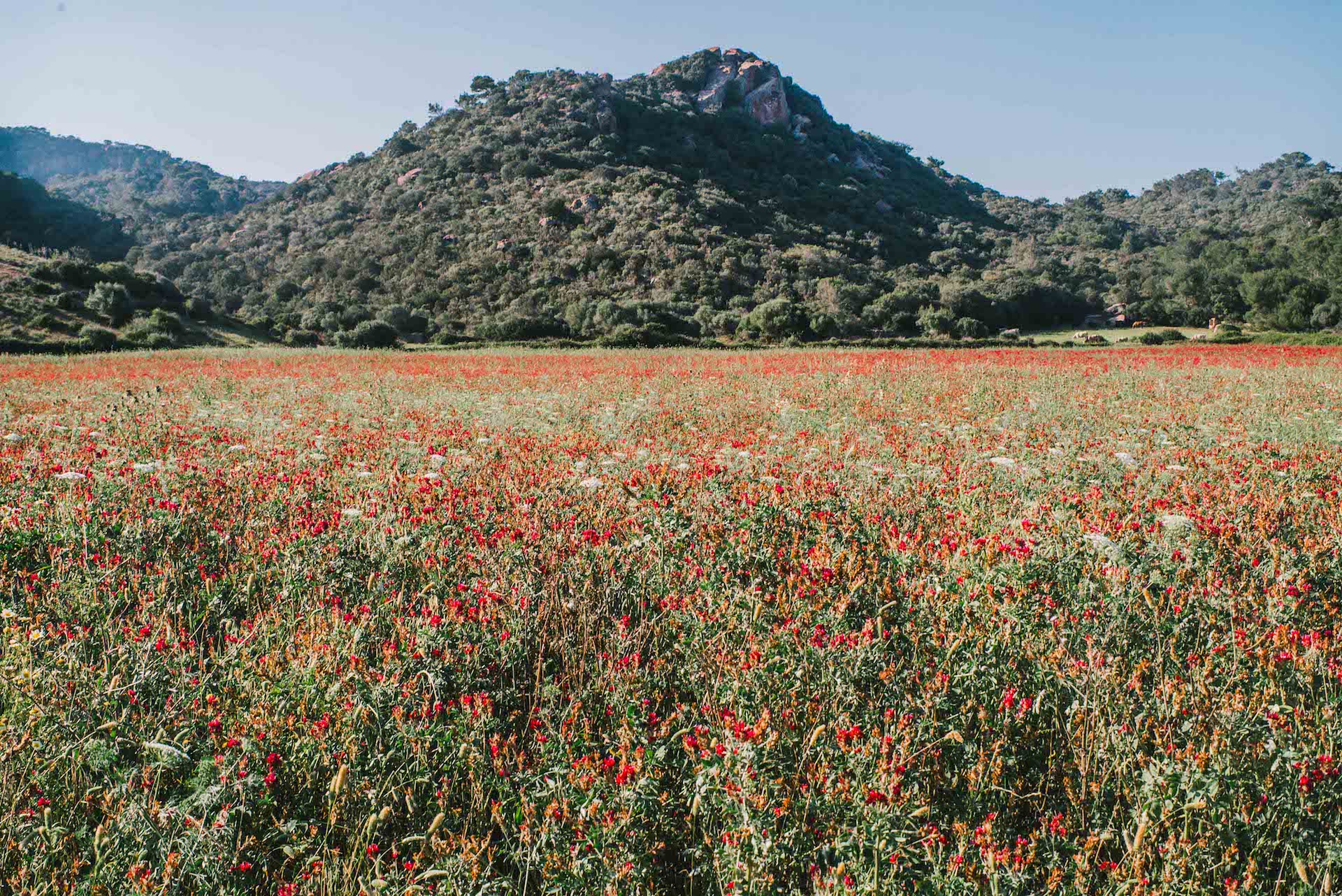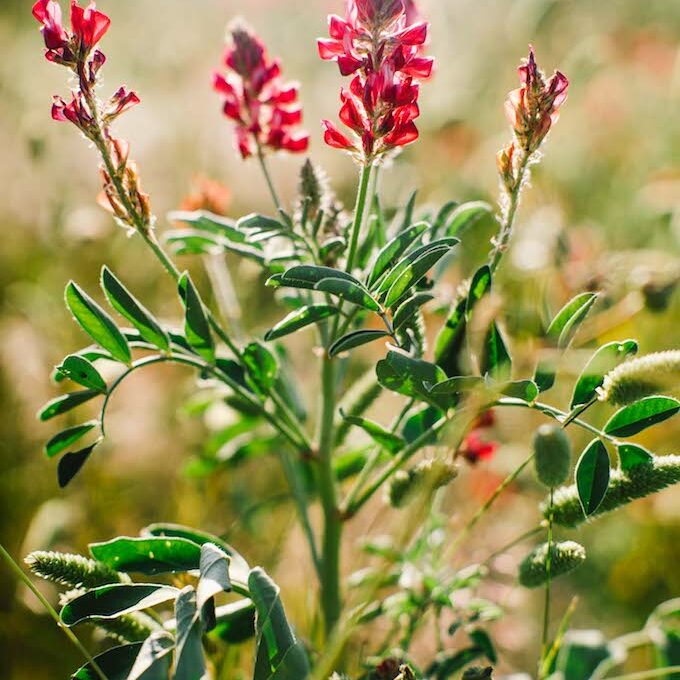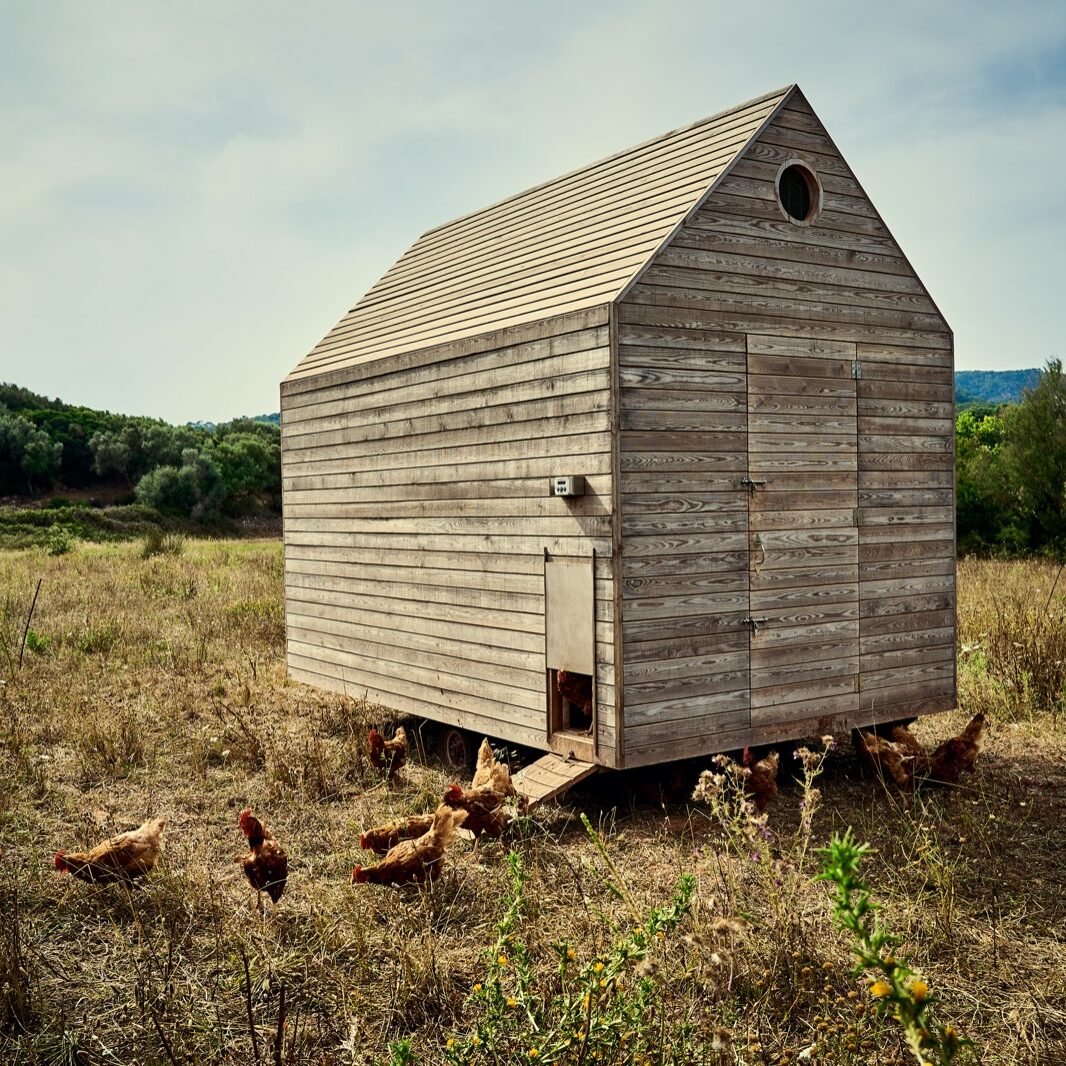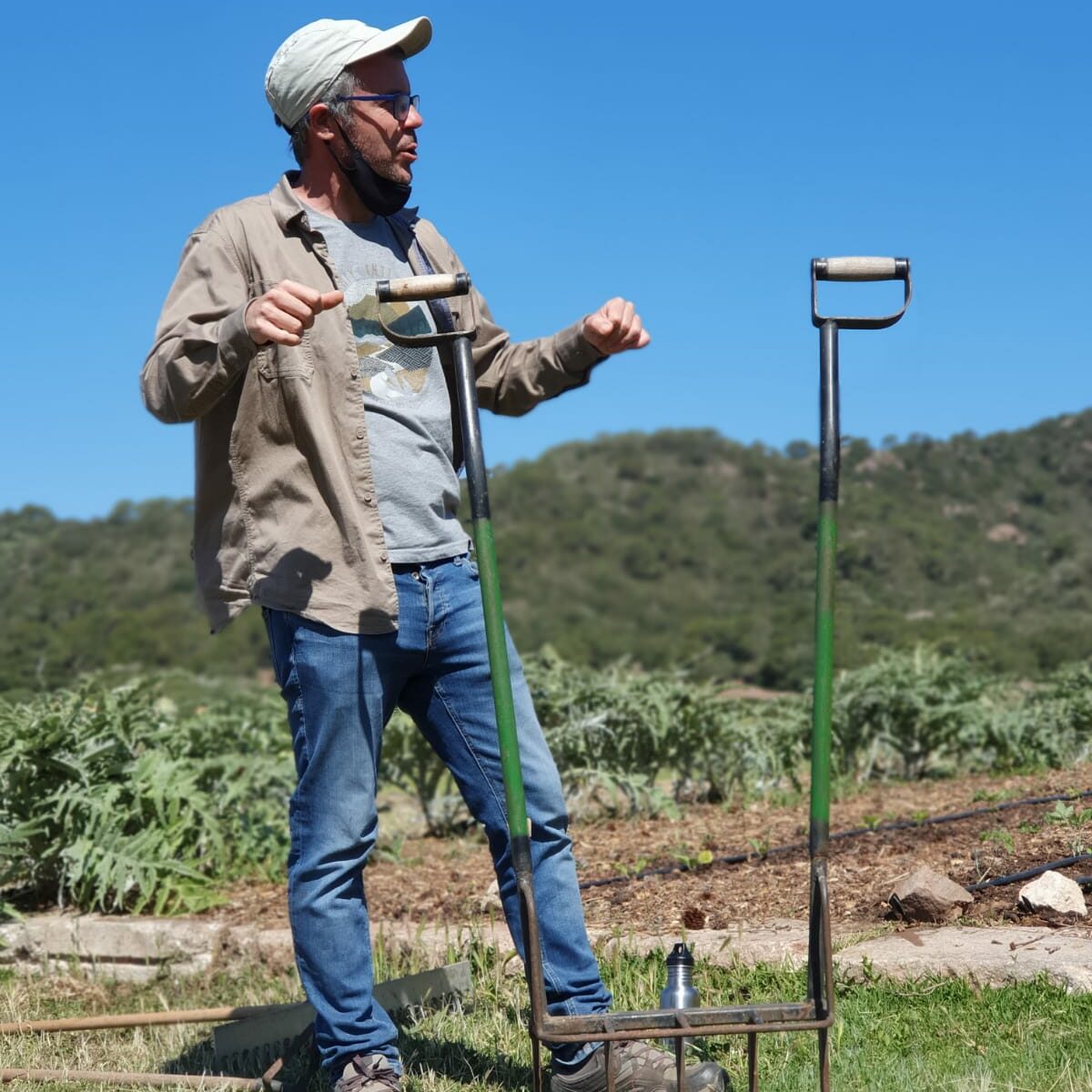
IN THE NEWS
La Vanguardia
Will he be able to regenerate
an entire island with a flower?
Francesc Font, Agirculture Director of Son Felip & Algaiarens
Son Felip y Algaiarens is a haven of peace on an island where everything that is not a beach is as if it did not exist for the peninsular. If little or nothing is known about how curative Menorca can be in spring, this estate already verges on the transcendental. Something that is perceived approaching along a path full of plateaus, high vegetation caressed by the sea breeze, native red cows reigning freely and flowers, many multicolored flowers with a predominance of red. A hunch that everything is going to be fine that increases when stepping on the land of the four farms united between the emblematic beaches of Algaiarens and Cala Pilar, north of Ciutadella.
It's more than 1,000 hectares and the stage is showered with splendor in the grass with insects fluttering through the air, centipedes wriggling on the ground, stoic snails hooked on white walls and crickets the size of a hand that jump as if gravity did not exist. It is an agricultural project that began shooting in 2014 and eight years later it has established itself as the European mecca for understanding the charm (and potential) of regenerative agriculture.

At the reins of this symphony of nature, and with a golf cart to be able to cover the entire territory without shooting the hearts of the visitors, is Francesc Font, a ninth-generation agronomist and farmer. This man from Empordà, with a well-rounded speech and no fissures in sight, was once able to travel with his family to Australia, the cradle of regenerative agriculture, driven by a hunch: to soak up the secrets of Darren J. Doherty and Joel Salatin, authentic gurus of a new way of approaching agriculture that advocated from the antipodes to recover the fertility of the soils that were destroyed with the chemicals and the lies of the supposed Green Revolution of the 60s.
Returning home with a suitcase full of experiences, Font wrote Rooted in the Land, a book with which he has become the greatest promoter of the regenerative in the Mediterranean basin. "I have realized that the main barrier to promote regenerative agriculture is in the mind and not in nature," he says. “The biggest limiter is always in the head; the ground does not limit anything”. He admits that it happened to him as a former conventional farmer and assumes that it happens all of a sudden to many peasants when they enter this unknown world. "Everything can be regenerated if you want, but without a mental chip change it is impossible."
A change of mentality to which the large agricultural companies do not want to go against the foot so as not to lose their share of the cake. “We have two main objectives. In the first place, implement a sustainable project from the economic and environmental aspects. Demonstrate that this is profitable and that it is not a milonga. Secondly, to create something that can be a model for the rest of the farms on the island and, why not, for the rest of the Mediterranean area”. Hence, Francesc Font is now advising Menorcan estates, multinationals and other estates in southern Europe and Africa.
All this without counting the online courses that it carries out to satisfy the demand of curious farmers. “Menorca has made things easier because here there is a tradition of working the fields that was lost years ago on the peninsula. There is an interest in our model and we already advise about 50 Menorcan farms. That is to say, 10% of the territory values regenerative agriculture with good eyes”. The more open mentality of the new owners is paving the way because “it must be emphasized that regenerative agriculture was not very well known in Europe when we wanted to implement it. After eight years we can say that more people already know her”, she says proudly.

But what exactly is regenerative agriculture and why is it gaining new adherents at cruising speed? “We like that people see regenerative agriculture as a toolbox that allows them to produce sustainably,” says Font. The truth is that the great change requires a transition of approximately two to three years if the intention is to move from conventional to regenerative agriculture. And not even meeting the requirements can success be guaranteed in all territories. It is a mandatory toll that not everyone can bear behind their backs without getting their fingers caught. “It is not a process from today to tomorrow and, furthermore, it has no end because you can always improve. We have been wrong a thousand times to get here. It is to take the trick and go sowing the way”.
If Francesc Font explains the theory with total conviction, it is because he assures that he earns a better living than before. “And that we produce a little less; the more you manage to activate nature, the less you invest economically as a farmer. I like to say that regenerative agriculture plays with nature instead of fighting against it. We all know the current situation of collapse of conventional agriculture and one of the triggering factors was wanting to go against the will of nature”. Font was an adviser in organic farming, but he never applied his techniques on his family land in Girona “because it simply achieved a change of inputs. That is to say, I abandon the chemical and throw myself into the natural to sell the same thing twice as expensive even if it works worse, ”he sums up without concessions. "They give you a subsidy, which is very good, and you can put a seal on your products." A transformation that remained in the continent, in the aesthetic, without going to the entrails or roots of the matter.
"This is when he understood that he should look more at his feet and not at the sun."
This is when he understood that he should look more at his feet and not at the sun. “What most attracts us who believe in regenerative agriculture is the science to improve the soil based on microbiology, minerals and organic matter.” The three m's call it, and the result is palpable wherever you look. “You start with fairly degenerated soils with very low organic matter (0.5%) and in two years you already measure 2% organic matter. The better the soil, the more rainwater they can retain because the organic matter is like a sponge. This way you save on irrigation”. In Son Felip and Algaiarens they take all this to the extreme because to guarantee the health of the land they use animals for everything except tillage. “Because farming is a super degenerative practice. And this is where we collided with other farmers and where I collided with my grandparents and my parents,” says Font, reaching the point of no return. “Tilling is something genetic of the farmer's trade and explaining that you have to stop tilling is hard for many to digest. In the end, it is letting the animals and plants work for us. There is no sustainable food production without the presence of indigenous animals and plants”.

And for this the presence of chickens, pigs, horses and cows is vital, but above all of a singular flower, the zulla or enclova, as the natives on the island say. “One of the virtues of the zulla is that it has a very thick taproot that goes down deep. It feeds us, loosens the soil, provides nitrogen and makes a wonderful flower for bees to produce honey. It is a magnificent plant with a very interesting history. As a leguminous plant, it fixes nitrogen from the air thanks to bacteria that live in the root of the plant. The key is that the zulla can only live if it has these bacteria in the root. Without this symbiotic relationship, the plant dies. The curious thing about all this is that these bacteria must be present in the soil before planting the zulla. Otherwise, the plant does not grow.
Hence it works so well only in soils where this plant existed half a century ago. In Menorca, for example, the zulla arrived approximately 200 years ago and is almost exclusive to the dry land of this island, since in the rest of the Balearic Islands its presence is testimonial. There are documents that show its cultivation in Sicily or Malta, but its cultivation cannot be extended internationally either given its sensitivity to cold or frost. “It is also pure protein for animals such as chickens or bees for enclova or zulla flower honey. If there is no history of that plant in a particular ecosystem, it will not work. That is why it is in so few areas. I have tried it on my farm in the Empordà and there is no way. That makes this island a unique place for regenerative agriculture, because the zulla grows spontaneously."
Perhaps the most surprising symbolic case is that of mobile chicken coops. An example to assume to what extent regenerative agriculture can be implemented as a gear for perfect coexistence. “Eggs are one of the products where the change in quality is most noticeable. They are the most expensive eggs in Menorca; we sell them all and we could sell many more”. Farm eggs cost 6 euros a dozen, or 50 cents an egg, whichever you prefer. “We didn't want to set up a chicken farm to have our own eggs. Energetically speaking, it is not efficient anywhere (confined animals, risk of diseases, regulating temperatures, diet, etc)”, says Font. Another option was to leave the chickens grazing with the doors open, but they were clear that if the birds were always in the same place, the floor would suffer after a few days. “To regenerate, we found the solution of setting up mobile chicken coops with hens grazing and generating a positive animal impact in the form of excrement to fertilize the soil. In addition, it was the best way to also control weeds and good grasses by cleaning the area of insects. After a week, we move the electric fence from the chicken coops to the next plot to generate the same impact as the previous one.”
The plot is not repeated until it is certain that the plants have recovered and are ready for animals to re-enter to eat them. “Playing with nature means that one morning we put the 200 head of grazing cows on the plot and after a few days the chickens come in and peck at the cow droppings. By pecking at their faeces, they spread fertility across the field without energy consumption on our part. As the fertility of the soil is favored, there is more plant growth and, as the plants grow more and better, more grass is generated to earn more money and more carbon is captured”. In other words, everything is planned to the smallest detail creating a circuit through different parts of the farm. "Nearly half of the chickens' diet is these plants." And among them, of course, is the enclova or zulla, which serves as protein along with the animal protein of insects.
The final result is foods with nutritional properties higher than the average because they acquire more beneficial minerals for the organism with such a healthy soil. It is here when the hare of the price debate jumps and the complex accessibility for all pockets of “select” products. And Francesc Font adopts a more forceful position. “It is an erroneous debate because what is not normal are the prices that are being paid for food. The result is a drama with the disappearance of half of the farmers. In addition, low cost prices have enormous environmental consequences. They say that it is double what they are worth and that our children will pay for it. What you have to do is pay a real price and now we pay so little that when we compare everything seems nonsense. Sure we could make eggs and oil cheaper, but we'll never make tomatoes for ten cents. Tomatoes cost two euros and if not, let's not eat tomatoes. The current food system deserves a paradigm shift: we have to eat well and food is worth what it is worth.
That is why whenever he has the opportunity to talk to a farmer who is hesitant about the change, he usually argues the same premise. “Don't spend 12 hours on top of the tractor. Spend 8 hours and the other four sell your product. You have to be proactive and get out of the usual outlets that pay what they pay. If we manage to sell eggs and oil at such a high price, it is because we move, explain our history and give our products a try. It is not easy, but there is no other way. We cannot continue to have such a precarious job in the field”.